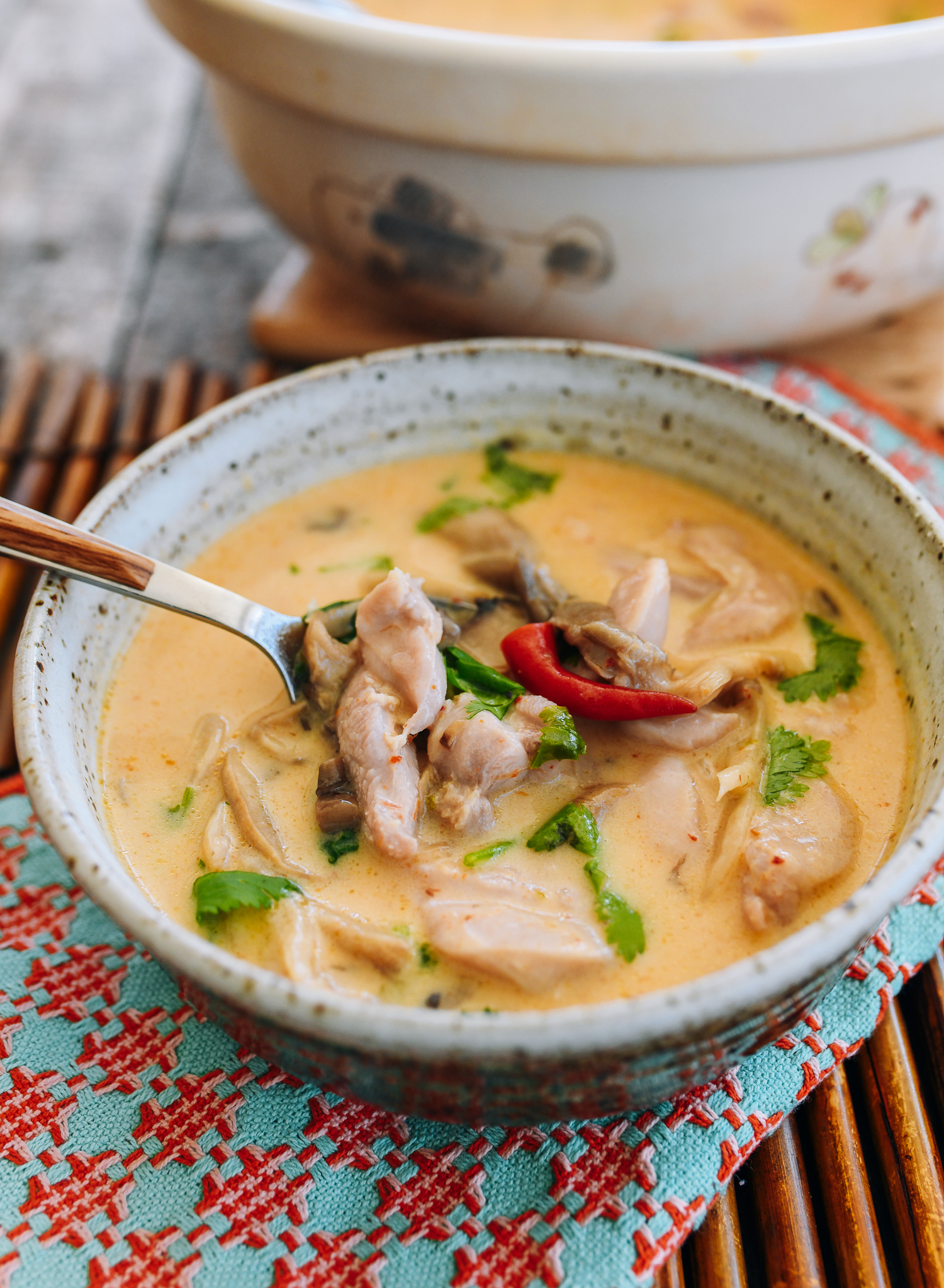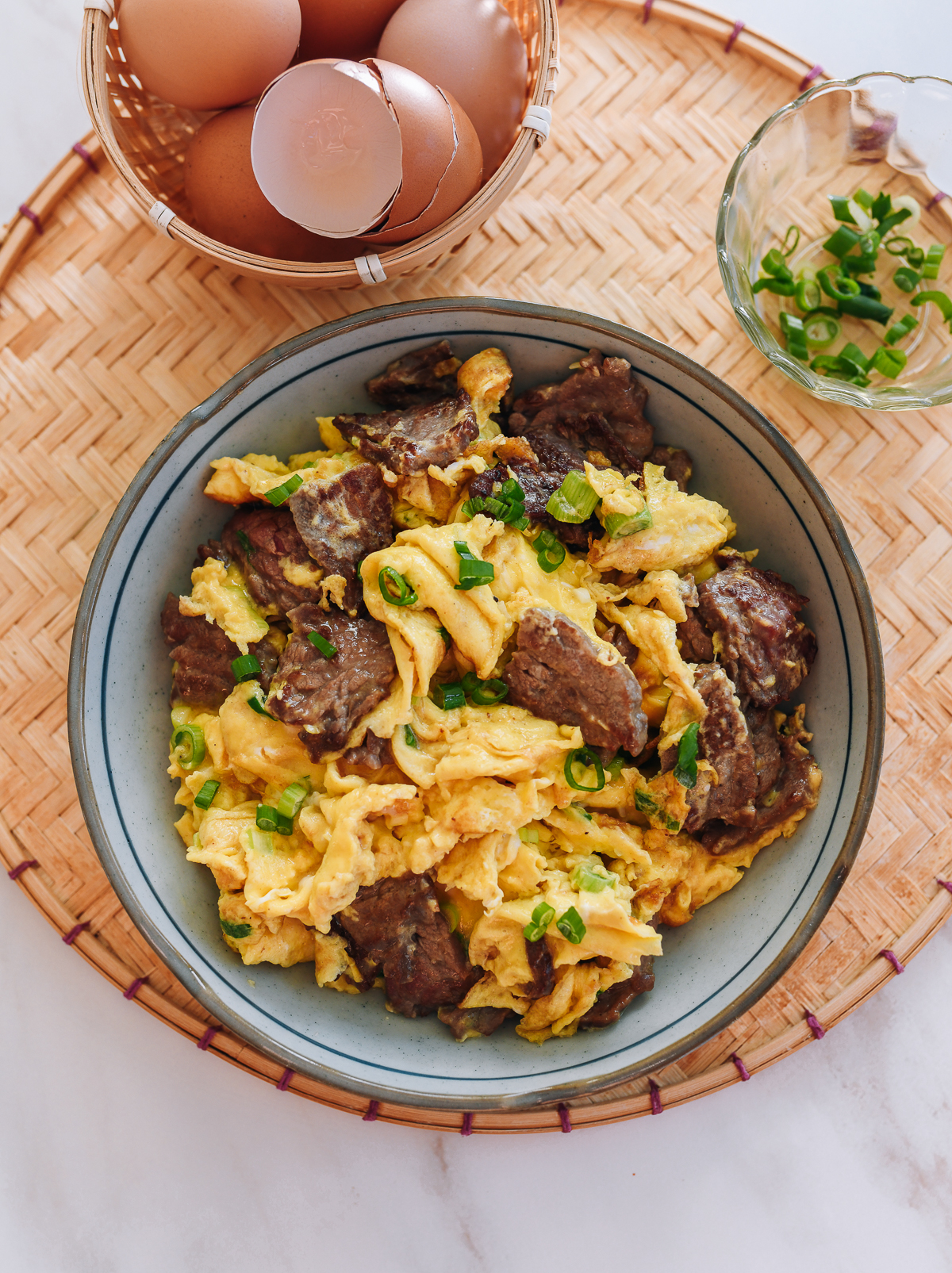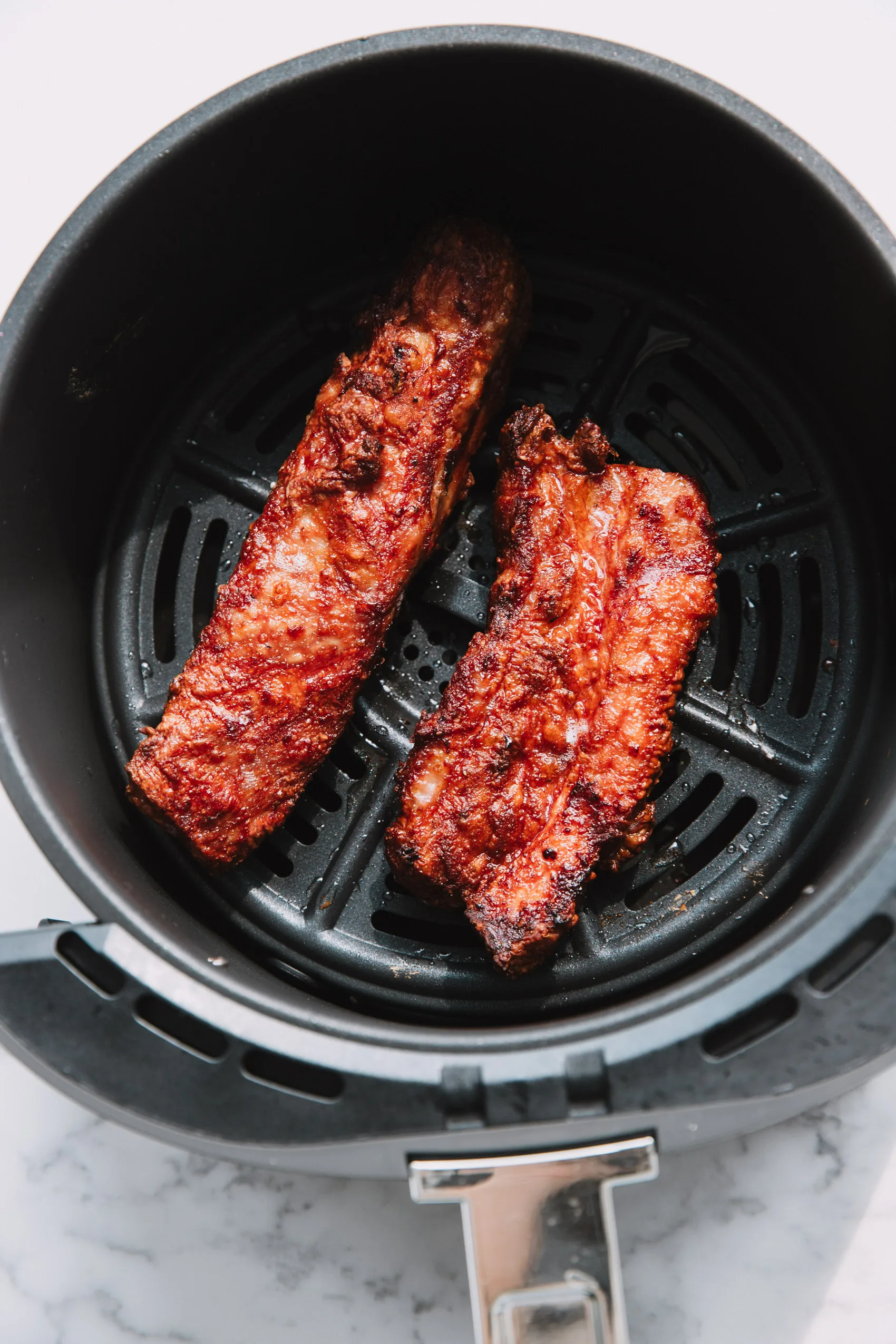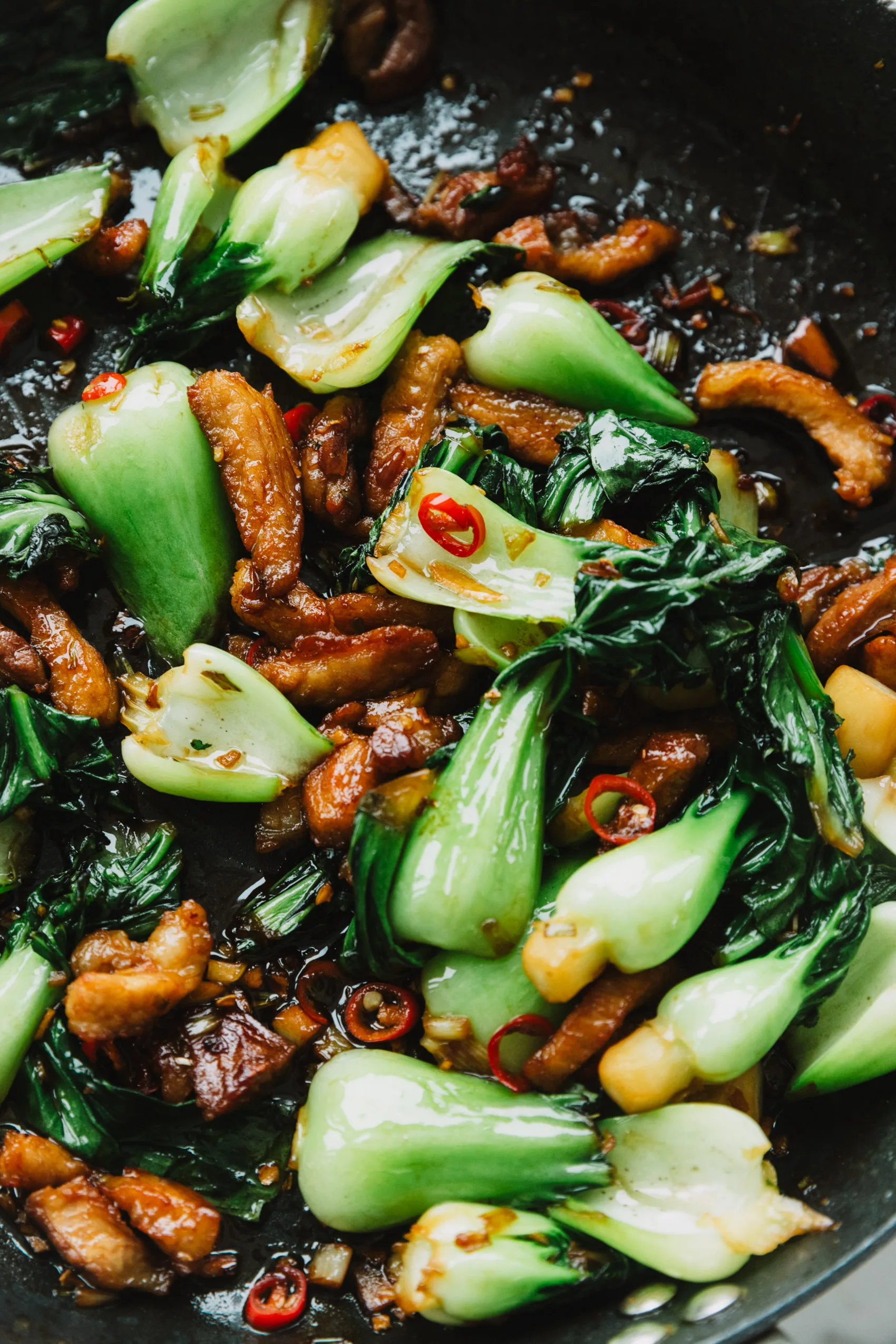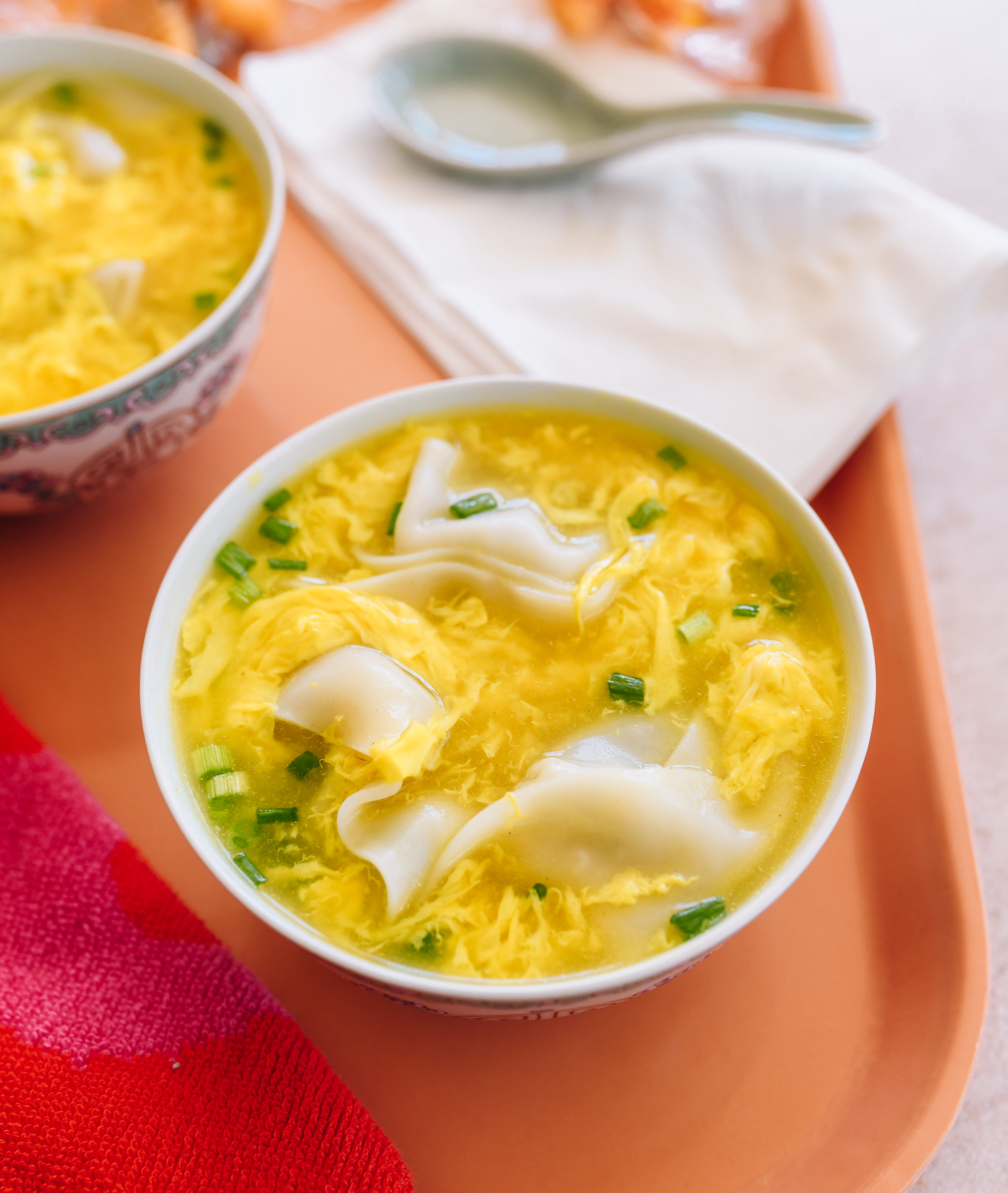Tom Kha Gai is a delightful Thai coconut chicken soup that perfectly embodies the harmonious balance of salty, sweet, sour, spicy, and bitter flavors characteristic of Thai cuisine.
What is Tom Kha Gai?
If you’re unfamiliar with Tom Kha Gai, prepare to be amazed! This iconic Thai soup boasts a coconut milk base infused with fragrant aromatics such as lemongrass, chilies, galangal, and lime leaves (or lime zest), complemented by sliced chicken, mushrooms, and fresh herbs.
The richness of coconut milk lends a creamy mildness to the dish, making it a staple on our Thai restaurant outings. I can’t believe it took me this long to share my recipe, but here it is!
Why You’ll Love It
- Quick comfort food: This flavor-packed bowl comes together in about 30 minutes, unlike soups that simmer for hours.
- Versatile: Easily customize with your choice of protein, spice level, and additional ingredients.
- One-pot wonder: Minimal cleanup required!
The Building Blocks of Tom Kha Gai
Let’s take a look at the ingredients and possible substitutions if you’re in a pinch:
The Aromatics:
- Lemongrass: An essential ingredient, increasingly available in regular supermarkets and Asian markets. You can also order it online from Asian grocers.
- Galangal: Another key ingredient, galangal is a relative of ginger with a unique flavor profile. If fresh galangal isn’t available, frozen galangal works well, and in a pinch, regular ginger can be substituted.
- Makrut (Kaffir) lime leaves: Fresh leaves can be found in well-stocked Asian markets, but dried versions are more readily available online. Lime zest is a great substitute!
- Thai chilies: These small chilies pack a punch. Omit them if you prefer a milder flavor or are cooking for spice-sensitive individuals.

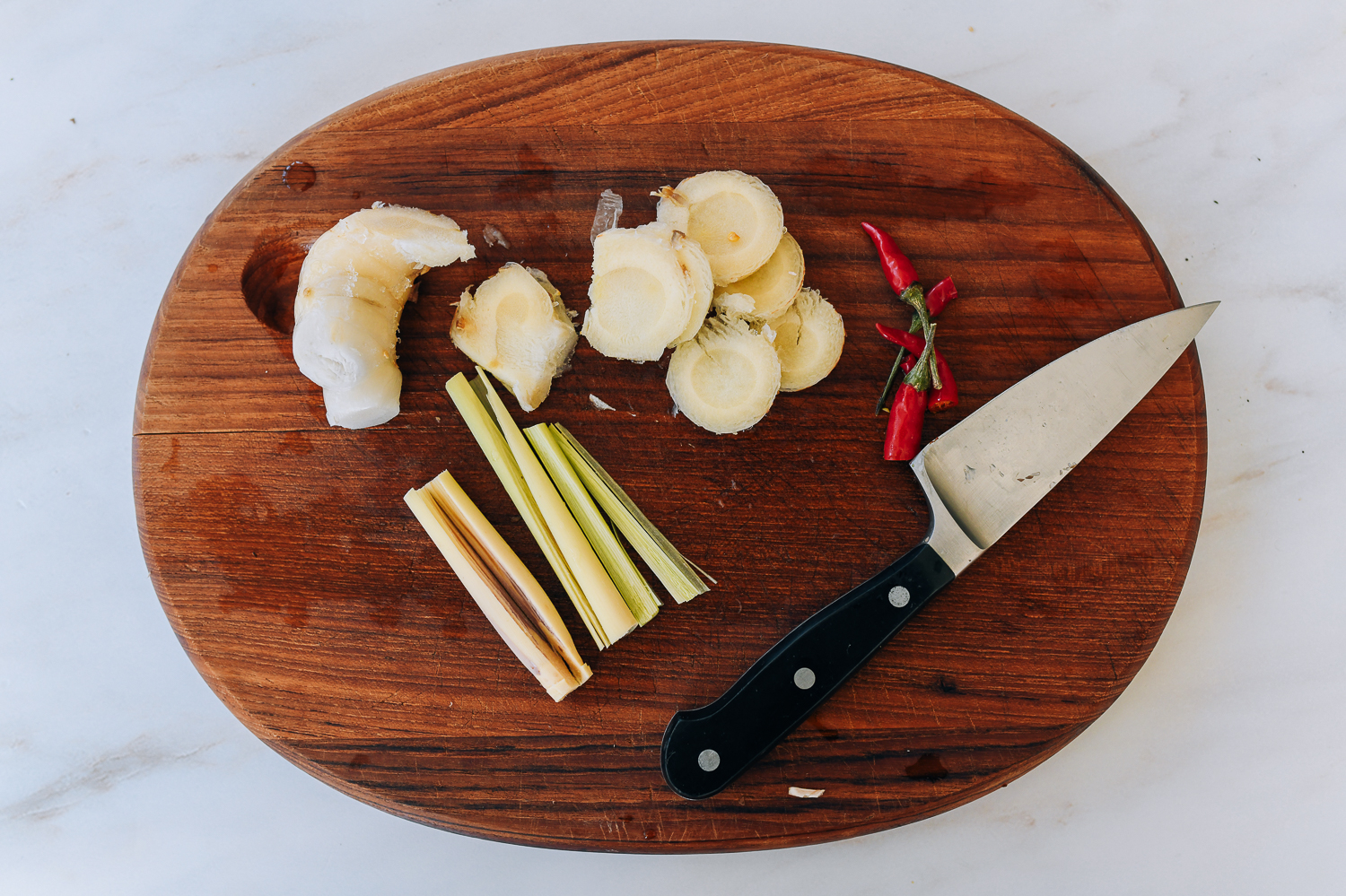
The Soup Base:
- Chicken stock: Use any canned or homemade chicken stock with a clean flavor. Water mixed with chicken base also works well.
- Thai red curry paste: While optional, this ingredient adds a burst of flavor and color. I recommend Maesri red curry paste, which contains many of the main aromatics in this soup.
- Coconut milk: I prefer full-fat coconut milk, but you can use light coconut milk or replace some with more stock for a lighter soup.
The Main Ingredients:
- Boneless skinless chicken thighs: I recommend thighs for their flavor, but breasts can also be used. For a vegan option, see suggestions below the recipe.
- Mushrooms: Use your favorite variety; oyster and shiitake mushrooms are excellent choices, but button mushrooms work just as well.
The Flavor Balancers:
- Fish sauce: Adds umami and saltiness. Even if you’re not a seafood fan, it’s essential for this soup.
- Lime juice: Provides bright acidity and a sour punch. Serve with additional lime wedges for those who enjoy more sourness.
- Sugar: A touch of sweetness enhances the complex flavors. Palm sugar is great, but any brown or granulated sugar will do.
- Cilantro: Adds freshness and aromatic flavor. If you dislike cilantro, scallions are a good alternative.
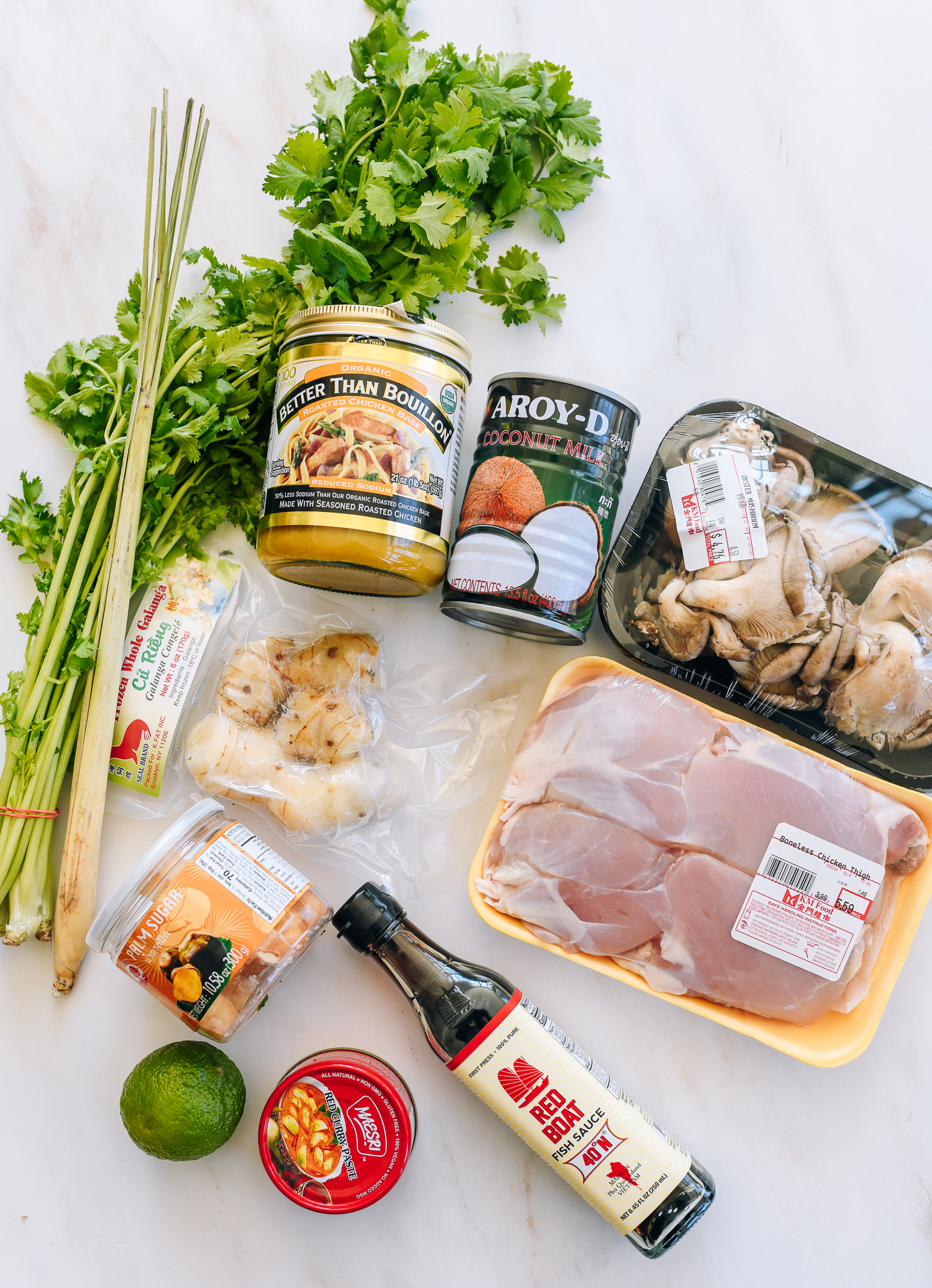
Developing This Recipe
This version builds on a great recipe from Hot Thai Kitchen, with modifications based on our preferences and some inspiration from Chinese cooking techniques. I’ve incorporated a simple velveting method for the chicken, enhancing its tenderness, and stir-fried the mushrooms before adding them to the soup for improved texture. I adjusted the ratios of stock and coconut milk, added more mushrooms, and included the optional Thai curry paste.

Now, let’s dive into the recipe! You’ll see just how easy it is to create this restaurant-quality soup at home. Once you try it, Tom Kha Gai may become your new favorite comfort food.
Tom Kha Gai Recipe Instructions:
Combine the sliced chicken with cornstarch, and 2 teaspoons each of neutral oil and fish sauce. Set aside.


In a medium soup pot over medium-high heat, add the remaining tablespoon of oil and the mushrooms. Fry the mushrooms for about 5 minutes, or until tender.


Add the chicken stock, lemongrass, galangal, lime leaves or zest, chilies, red curry paste (if using), and sugar. Bring to a boil over medium-high heat. Cover, reduce the heat, and simmer for 6 minutes.

Stir in the coconut milk and bring back to a simmer over medium-high heat. Be careful not to let it boil vigorously, as this could cause the coconut milk to split.


Add the chicken and return to a simmer. Lower the heat to medium-low, cover, and cook for 8 minutes, until the chicken is cooked through.
Turn off the heat and stir in the remaining fish sauce, lime juice, and fresh cilantro (or scallions, if you prefer). Season with salt to taste if needed. Ladle into bowls and serve on its own or with steamed jasmine rice!

Recipe Variations & Vegan/Vegetarian Adaptations
- Add cooked rice noodles for a noodle soup. Rice vermicelli is a great choice!
- Add vegetables like choy sum or baby spinach to increase your greens intake.
- Replace some chicken with tofu for a lighter dish.
- Switch proteins; try shrimp or fish fillet pieces instead of chicken.
- Make it vegan by using vegetable stock, substituting fish sauce with soy sauce or vegan fish sauce, and using tofu and vegetables instead of chicken. Adding a tablespoon of tomato paste or fresh tomatoes will enhance the umami flavor.

